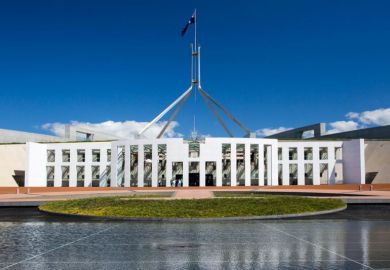Academics have been the “real victims” of a “transformational” phase in Australian higher education that saw their numbers grow by half while student enrolments doubled and tuition fee debt rose tenfold.
Andrew Norton, professor in the practice of higher education policy at the Australian National University, said academia had been “one of the cushiest jobs you could get” in the late 1980s. Now, for employment conditions and job security, early career academics had “probably the worst kind of professional job that you could get”.
“Really, is that a viable way of running the system?” he asked, during a webinar exploring the implications of the data in the latest edition of his Mapping Australian Higher Education series of reports.
Professor Norton told the webinar, hosted by the Future Campus newsletter, that participation rates of school-leavers had risen from 28 to 40 per cent since the beginning of the century. Academic numbers were up by 50 per cent, notwithstanding job losses during the coronavirus pandemic.
But unlike previous expansionary periods, the growth had occurred almost exclusively in universities established before the turn of the century, many of which had become very large by global standards. “Is this a good idea, to create these absolute mega institutions?” he asked.
Professor Norton said student debt, which had reached over A$70 billion (£37 billion), was now a “big issue” for government and individuals alike. Policymakers were yet to fully appreciate the implications for “a whole range of life stage events”.
Meanwhile, the “typically fairly small” private higher education institutions – which collectively accommodated about 7 per cent of students – tended to have higher satisfaction rates than the “enormous” public universities.
Professor Norton said there was a dearth of research to explain student indifference to the nation’s best ranked universities. One possibility was that their largely private school recruits had higher expectations of educational institutions than the less well-heeled students that predominated elsewhere.
“If you’re very confident of filling all your places, maybe you simply don’t need to put the effort into student experience,” he added. “The non-university providers [are] completely dependent on the market. If students don’t like them, they go broke.”
But things had been worse in the 1980s, when the first course experience questionnaires had revealed satisfaction rates of about 35 to 40 per cent. “That was a massive wake-up for the sector, and a whole lot of things have been done since which have improved that,” Professor Norton said.
However, with satisfaction rates now flatlining, the government may have decided that “voluntary changes” had achieved as much as they could and the time had come to “force the issue”. Professor Norton said Canberra had embraced the Universities Accord’s “highly interventionist agenda”, as demonstrated by new student support requirements which recently passed parliament.
He said things had escalated since the late economist Max Corden coined the phrase “Moscow on the Molonglo” to describe central planning in higher education. “Max had no idea what was coming,” Professor Norton said.
“This is going to be Moscow ramped up several times, I think, if the government’s current path and the accord come to reality. And then inevitably in 10 years there’ll be a huge backlash and you’ll have deregulation. There are cycles in these things.”
Register to continue
Why register?
- Registration is free and only takes a moment
- Once registered, you can read 3 articles a month
- Sign up for our newsletter
Subscribe
Or subscribe for unlimited access to:
- Unlimited access to news, views, insights & reviews
- Digital editions
- Digital access to THE’s university and college rankings analysis
Already registered or a current subscriber?










